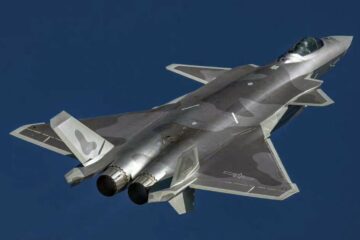Last Updated on 20/05/2022 by AIR OPERATIONS
These are our picks for this week. As usual, all content is external and as such is not covered under AIR Privacy policy (We have to say that because of Sacramento and Brussels, mostly.)
Economics
We open up with a piece from the Wall Street Journal addressing the impact of the imprudent monetary policies from the Fed and other central banks over the past 18 months. This has partially contributed to an increase of the debt levels in emerging markets from 52 percent to 67 percent with private debt increasing to $5.8 trillion as well. The risks according to the journal are:
These bills will now come due, big time. Rising interest rates are an immediate issue, especially for governments. Interest expenses as a percentage of government revenue, at some 10%, are the highest since before the 2007-2008 panic and set to rise.
A slowdown in global trade from slower demand in the U.S. and Europe would exacerbate developing economies’ debt woes by cutting into the corporate income and tax revenue those countries counted on to repay debt.
This is very concerning, and will be likely exaggerated by exchange rate fluctuations as well. As pointed out by the Journal, the USD appreciation will have a substantial impact while USD borrowing is at all time high. Debt servicing will rapidly become an issue.
What does this mean? An emerging market crisis is in the making; how and where it materializes may have a significant impact on the region(s) together with trade and politics. What this may lead to ranges from a “Venezuela” like soft revolution to a more serious “Falklands” war type event driven by a failing economy, authoritarianism and old rancor.
We feel compelled to quote from our AIR109 note in January 2021
This will result in the US and EU economies becoming increasingly financially fragile and engaged in a low interest rate fallacy that creates two major risks. First, the likely inability to sustain another major shock and second, the zero-sum game when it comes to leveraging interest rate increases, as an increase would also increase governmental debt burdens and therefore require higher taxes, which would then reduce economic growth.
This will likely lead to a fall in consumer buying power through rising inflation and an increase in consumer debt. That will be followed by your friendly political pendulum with the return of the low tax/small government political class. There you have it … the seeds of the next crisis have already been planted.
Here is the WSJ piece.
Aircraft OEMs
How about the Boeing Company moving their HQ from Chicago to Washington DC metro? No surprise here. This is something that was foretold and lead us to further question the overall future commitment of the enterprise to its legacy clusters.
This is not a “missed opportunity”, it is the logical progression for an organization with a shrinking commercial footprint. One of AIR’s advisor was pointing out to us in Seattle this week that the driver behind the move could probably be partially motivated by the surge in the Defense and Space business overall share of Boeing’s business. This transformation is driven by currently shrinking (and struggling) commercial revenues and resurgent defense opportunities better aligned with Boeing’s near to medium term capabilities.
Cracks in that strategy became evident from the 737 Max crisis. Analysts have broadly attributed the Max problems to a shift in Boeing’s focus away from engineering excellence and toward stock price and healthy quarterly reports.
“It was a dysfunctional arrangement,” says Merluzeau. “Not because of location, but because of company culture and integration of that culture.”
Aboulafia thinks Boeing would be better served moving to Seattle, where it could focus on addressing the many issues facing its commercial aircraft business.
“I understand why they want to follow all the other defence contractors to where the money is,” Aboulafia says. “But it’s also not where their problem is.”
While we respect Richard’s perspective, we fundamentally disagree. This is a leadership driven issue at BCA that is compounded by the corporate failings of the past decade. Having the right leadership in Seattle begins with your engineering & management teams. We have supported this perspective in a conversation with the Business Journals here:
But aerospace and defense analyst Michel Merluzeau said location matters little when it comes to how effectively the company’s corporate leadership communicates with its Boeing Commercial Airplanes executives.
“To have the right leadership in Seattle is more important than to have the corporate headquarters in Seattle,” Merluzeau said. “They have all the talent they need onsite to fix it. The question is, how do you translate the requirements and communicate those to corporate to get corporate to invest to give you what you need to fix the problem?”
Flightglobal and Business Journals articles
Supply Chain
We highlight the piece from our colleague Alex Krutz at PIP for Aviation Week.
Alex’s key points are:
Supply chain strategies once developed and implemented within the business are vulnerable and could rapidly morph due to exogenous events and the outcomes from unmitigated risks that are affecting the commercial aerospace industry. Such challenging times increase the focus on supply chain actions and decision-making process. Supply chain leaders are pushed to reduce costs and ensure work transfers are successful while cost ratios are positive. Make/buy strategies are adjusted per management guidance while having to simultaneously ensure high-quality parts are delivered on time.
Recent initiatives such as negotiating price down to secure a renewed contract and applying debits to suppliers for quality rejections are becoming increasingly detrimental to supplier relationships. At this point, positive engagement with the supply chain should be the focus.
With possible solutions including:
The OEMs further can work with suppliers on technical synergies for product improvements by reviewing requirements, specifications and engineering changes that could yield cost-reduction opportunities on a shared basis. Once a supplier’s nonrecurring engineering expenses are paid back through the cost-reduction changes, overall cost reduction could be split 50-50.
His article can be found here
Geopolitics
What Exactly Is America’s China Policy? Excellent question with clearly undetermined answers that are clearly driven by lingering Chinese ambiguities.
Foreign Policy tries to clarify:
The Trump administration undertook the most profound shift of U.S. China policy in decades, viewing China as an existential threat to the international order and the American way of life. The Biden administration, even as it kept in place key Trump-era policies, has instead taken a less apocalyptic view, treating China as a regional military challenge and a competitor for global influence.
Both administrations are of the opinions that China represents a factual challenge to the position of the United States on the international scene.
U.S. President Barack Obama stood with Xi at the White House podium in 2015 to announce China’s promise not to militarize the sand islands it had built in the South China Sea or to continue stealing U.S. technology through hacking. But China went on to do both.
Not exactly a success for the Obama administration judging by the results here and here for example.
The administration has introduced new measures to protect key U.S. economic sectors and seeks federal money to accelerate research and development in the key 21st-century technologies….Xi often uses the phrase “great changes unseen in a century”—but despite Doshi’s impressive research in Chinese documents, it remains ambiguous whether Xi thinks these great changes extend beyond China’s domestic “rejuvenation” and achievement of major-power status to a global displacement of U.S. power. All this confusion and ambiguity underlines the futility of relying on Xi to provide clarity about China’s international aims.
In all, a very strong piece with limited answers that could be summarized as “beware the boa constrictor sudden strike”
Technology
Now for the concerning part of this review. We don’t know whether to like it or build a bunker in our future home in South Carolina.
In 2023 Tens of Thousands of Teslabots Will Work in Tesla Factories
The implications are significant and should find a way into the aerospace factory of the future.
Commercial Aviation
ATR fires a shot across the bow of Embraer. Regional Aviation will become the incubator of new technologies destined to support the decarbonization of air transport. A powerful NEO like aircraft of sort.
The Evo will remain a two-engine turboprop capable of flying on 100 percent sustainable aviation fuel (SAF). It will incorporate a new powerplant with hybrid capability as well as an eco-design that includes updated propellers and enhanced cabin and systems.
“The idea is to optimize the [conventional] thermodynamic engine with a second source of energy, namely an electrical one,” he said. Because the electric motor would boost power during takeoff and climb, the aircraft will generate optimized performance and improved fuel efficiency across the different phases of flight
It is going to take a while to get the airport infrastructure and vehicles SAF ready. So, good luck with that since the weak link is not the airplane indeed.
More here
Defense
Draken loses big and that loss is a reflection of the rapidly changing USAF requirements for pilot training. While this goes beyond the “performance” issues encountered at Draken, it also clearly highlights a shift with customer’s needs.
Draken 3rd generation assets and lagging avionics upgrades are suggesting that the Chinese or Russian threats will continue to evolve sufficiently rapidly to warrant investment in more representative organic capabilities
While red-air companies such as Draken “do wonderful work for the Air Force, especially at our formal training units . . . where we train basic fighter pilots how to fly,” they aren’t effective against jets like F-22s or F-35s….
“Five, six years ago we wouldn’t be talking about F-35s being adversary air because our adversaries didn’t fly fifth-generation airplanes,” Nahom said. “Well, the Chinese do now. So as the China threat has stepped up, we have to step up our replication.”
LVC (Live, Virtual, Constructive) training also plays a non-negligible part in terms of Draken’s asset weaker capabilities to support the evolution of advanced range training. For suppliers, it clearly is now a question of getting their hands of assets such as Mirage 2000s and F-16s that offer the best compromise between upgradeability and desired dynamic performances.
Read more here: Contracted Adversary Air Training ‘Inadequate’ For High-End Flight



